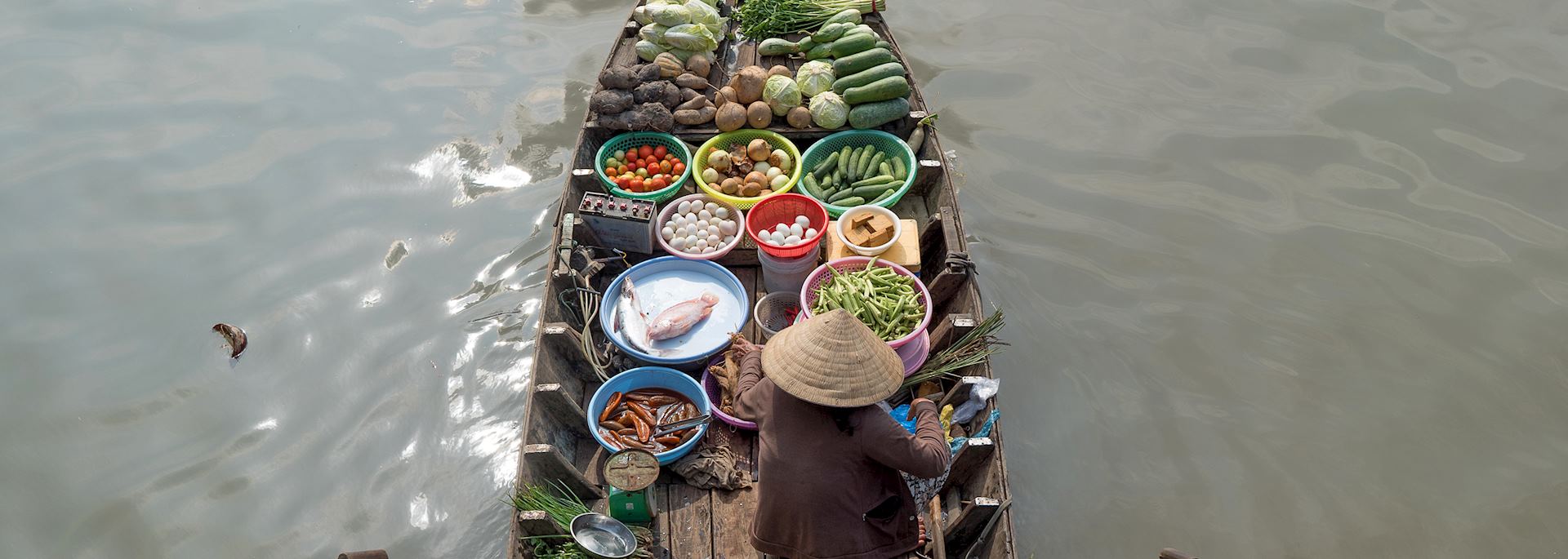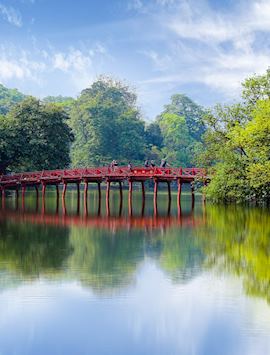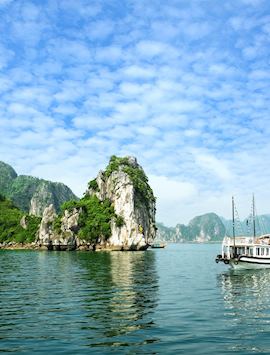By Audley Vietnam expert Craig
Initial writings on the Mekong Delta describe it as a wild land covered in jungle and swamp, where leeches swim like noodles, and the deafening sound of buffalo-preying mosquitoes fills the air. And, despite the modern infrastructure, in a sense, the delta remains a wilderness — ideal for those looking to explore far from the crowds.
On my recent trip, I sought out what to do beyond the well-photographed Cai Rang Floating Market and the region’s capital Can Tho — which is as far as most visitors go. You can take in the full range of places and experiences I’ve highlighted below in a ten-night trip right across Vietnam’s Mekong Delta, or add a few experiences onto the end of a classic Vietnam trip.
The quieter corners of Can Tho, capital of the delta
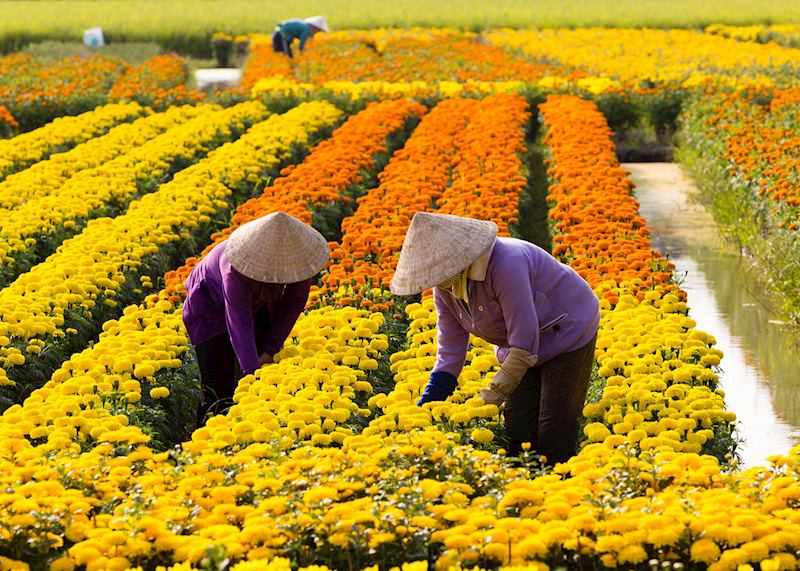
You’re likely to enter Can Tho over its bridge, a four-lane, 2.75 km (1.7 mile) engineering feat across the Mekong.
Cai Rang is a district of Can Tho, and I do recommend visiting its classic floating market despite it being a well-worn item on most visitors’ agendas.
Rather than joining the swathe of tourist vessels that outnumber the market boats five to one, try watching it from a local coffee vendor on the riverfront. And, because it’s a wholesale market, it operates all day, so you don’t need to get up at the crack of dawn (in fact, you’ll find it much quieter if you lie in and visit a little later).
Many visitors then move straight on to touring the rice noodle factories. But, again, wait until the afternoon, when they’re quieter, and you’ll see the noodles drying on racks in the sun.
The chocolate industry is booming in Vietnam, thanks to the success of artisanal brand Marou. You can see the chocolate-making process at a cacao farm, which still only attract a few visitors and encourage you to taste as you tour.
A short drive away is the town of Sa Dec, brought to life in Marguerite Duras’ French novel L'Amant, and the subsequent film adaptation, The Lover. You can visit the colonial house at the heart of the book, and the town itself retains the old, narrow streets, riverfront promenades and chaotic markets as described by Duras.
This area supplies flowers, trees and plants for the whole southern region of Vietnam. As a result, everywhere you look is touched by greenery and blooms.
In the company of a guide, you can walk through the flower fields and visit a local family who’ve opened their flower garden up to visitors — you might even be commandeered into donning a pair of gardening gloves and helping out.

Where to stay in Can Tho
One of my go-to properties is the Victoria Can Tho. The courtyard-cum-pool-area looks out onto the river, which is lit up by passing sampans in the evening. The food in the hotel’s Spices Restaurant showcases a range of regional cuisine, including bot loc cake, a chewy, rice-flour dumpling with shrimp or pork.
Alternatively, there’s the luxurious island hotel Azerai. Arriving at reception, I was handed a juice and cold towel, before boarding a speedboat for my approach to the island. Most striking is the size of the place — the grounds, the pool, the rooms, all of which offer plenty of space to relax.
Heading south to Soc Trang by sampan
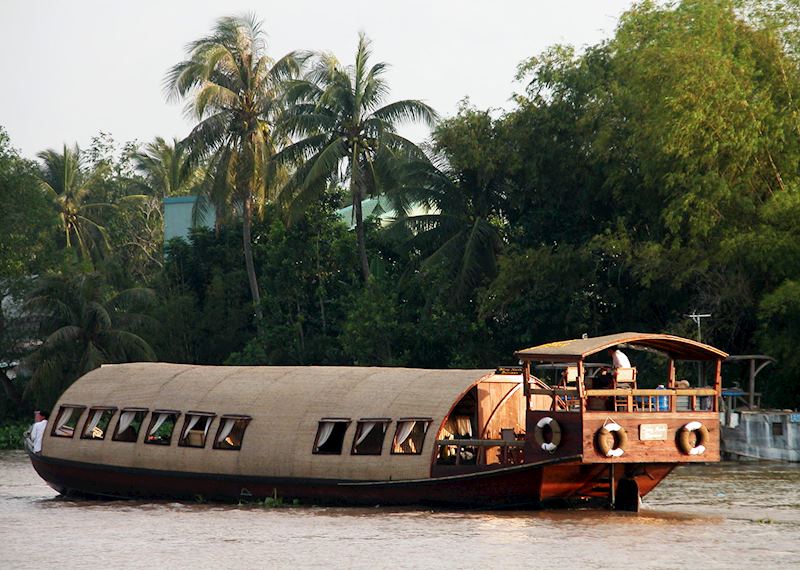
This is where your journey diverts from the normal path taken by visitors to this region. Most only ever dip their toes into the delta, going no further than Can Tho. But, to see the delta at its finest (and calmest), I suggest you keep heading south to the next major city, Soc Trang. The best way to do this is by a one-night sampan cruise. Not only does it allow you to see river life up-close, you also avoid the often traffic-clogged roads.
You’re welcomed onto the traditional rattan-roofed sampan with a cold towel and fresh coconut juice. The rooms are spacious, with an open-front living area for viewing the river at a relaxed pace. As your journey gets underway, cooling breezes flow throughout the boat.
The sampan stops off at a floating garden, where you can view precision gardening at its finest — tiny trees and plants grow on artfully built floating platforms to be bought in bulk by larger businesses in Sa Dec.
You can also disembark to visit a mushroom farm and local rice-wine producer, before taking a rowing boat ride through the mangroves at sunset.
Dinner is served on board, with dishes including local specialties banh xeo (crispy pancakes) and tamarind chicken, a grilled chicken dish packed with lime, ginger and sweet-and-sour tamarind root.
Early the next morning (the boat stops to moor overnight), you’ll continue to Soc Trang.
Far from the crowds in the Khmer provinces
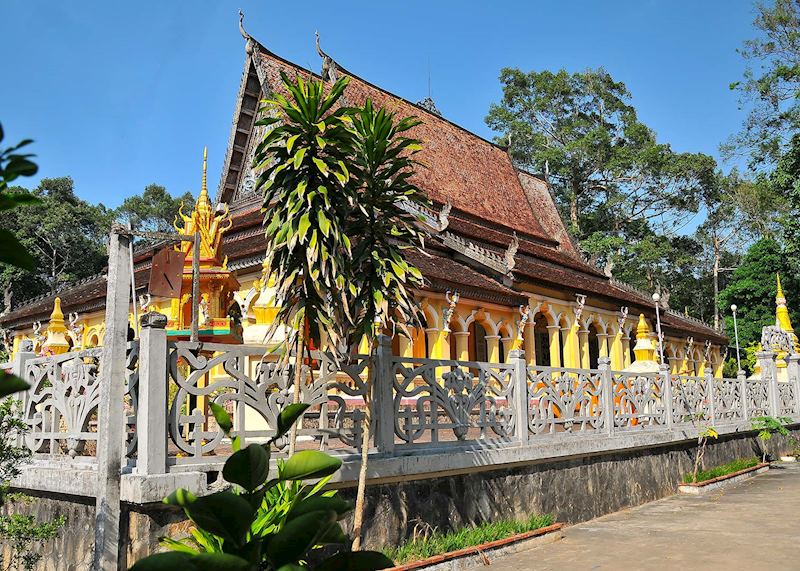
The region south of Ho Chi Minh City was part of the Khmer Empire until the 17th century, and so some areas in the delta remain distinctly Cambodian (particularly the architecture and cuisine), including Soc Trang and the coastal province of Tra Vinh. The first thing you might well see, as you arrive into these provinces, is one of the scores of family-run businesses processing dried fish and seafood on the riverbanks.
Soc Trang has little of intrinsic interest, so after you’ve disembarked the sampan, I’d opt to leave the town behind and drive into the countryside. Here you’ll get your first glimpse of the region’s major export, rice. Endless-seeming rice fields can make for a welcome contrast to the busy roads and towns around Can Tho.
Bridges haven’t quite made it this far yet — which has limited this area’s development — so you’ll find yourself crossing rivers by local ferry as you journey through the region. There are no big crowd-pleaser sights here: instead, you’ll find an extremely peaceful, tourist-free slice of Khmer-influenced Vietnam.
You’re best exploring on two wheels with a local guide, cycling along forest trails and past Buddhist pagodas, paddy fields and cottage industries.
And, the Khmer provinces are exactly the sort of place where you can experience an authentic local festival. My last visit coincided with Bom Om Touk — the Cambodian Water Festival.
Surrounded by hundreds of cheering locals, bright Buddhist flags and saffron-robed monks, my guide and I watched teams of rowers race along a small stretch of river. It was fiercely contested, and the atmosphere was electric. Eventually, the winners were crowned, streamers went off — and celebrations went on late into the night.
Where to stay in the Khmer provinces
The fledgling Suonsia Homestay, in the tiny village of Cau Ke in Tra Vinh province, is comfortable enough for a few nights.
The fruit orchards of Vinh Long
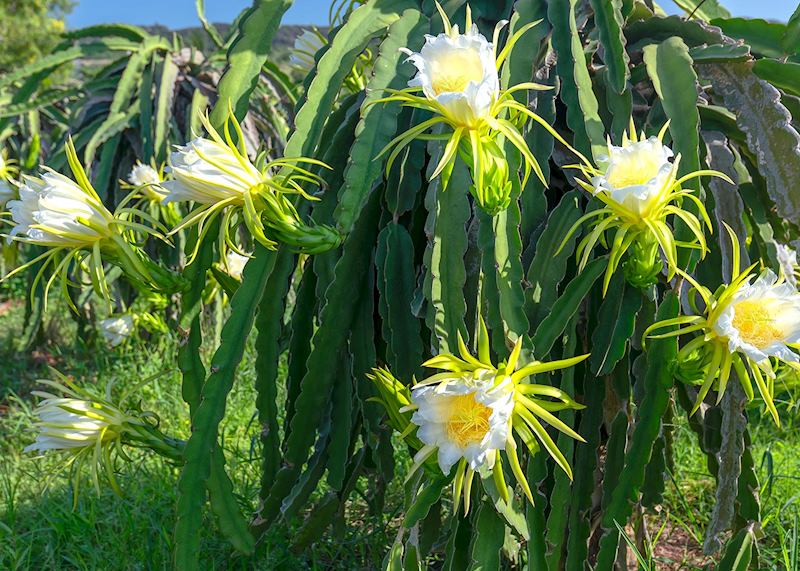
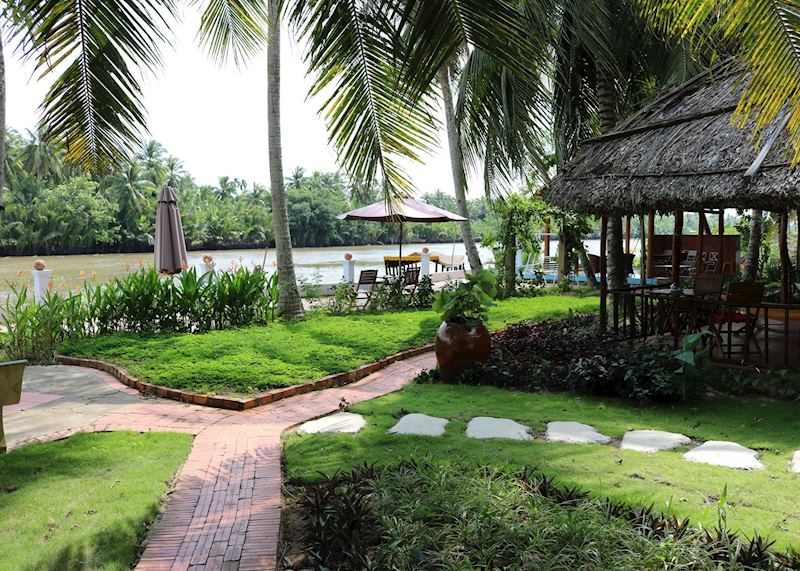
As you journey across into Vinh Long province (it’s about an hour’s drive north from Tra Vinh), fruit orchards gradually replace the rice fields. You can spend a relaxed couple of days here, cycling through dragon-fruit orchards, and taking boat tours to coconut factories.
But, the real highlight of Vinh Long for many (myself included) is the opportunity to visit Mr Luong. He’s a war veteran who opens his house to visitors, and he’s eager to sit and talk. He picked up the guitar and (after some rice wine) I was hooked by song number two.
Where to stay in Vinh Long
Coco Riverside Lodge is a simple family-run affair. Though by no means luxurious, its riverside bungalows are great for unwinding and just observing day-to-day life on the river.
I could have sat there all day watching the coconut cargo boats cruise by, and the local fisherman bringing in their nets.
Ben Tre, the kingdom of coconuts
I recommend ending your journey in Ben Tre (about a two-hour drive from Coco Riverside). It’s an area synonymous with coconuts — the fruits that grow here have a particularly high oil content.
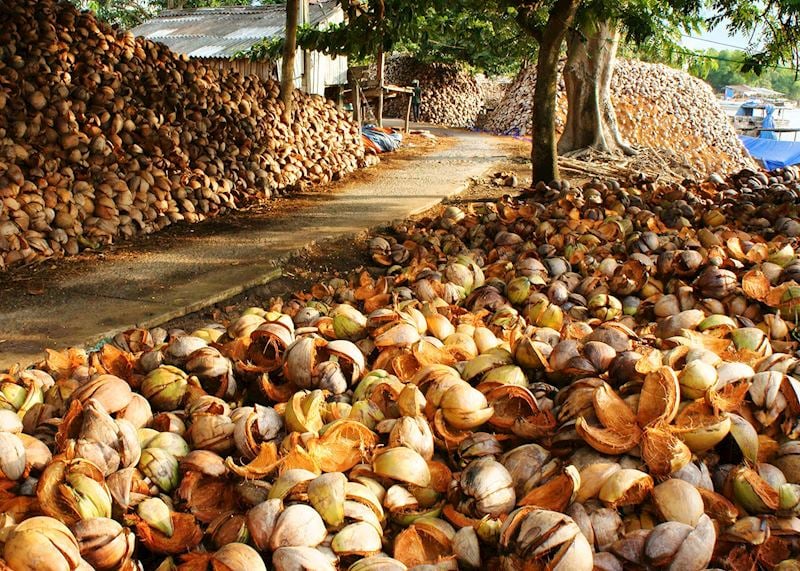
Admittedly, Ben Tre can become crowded with visitors who are just down for the day. So, to forgo the crowds, you might like to take the following private guided tour for an introduction to some of the Mekong’s main industries, transport and tastes.
Your trip starts with a visit to a family-run sticky rice cake business and a small coconut factory (there are plenty of chances to sample the goods), before you hop on a motor-driven tricycle to reach a tiny fruit-growing village.
After a walk through the orchards, you can spend time with a Vietnamese family who welcome visitors. Here you can try more Mekong treats: coconut candy, banana brittle and mango dipped in salt.
Next up is a private boat ride down a narrow channel taking you out onto the Mekong. This is where you might get your first view of Ben Tre City, with a towering Buddhist statue marking its riverfront.
Numerous barges litter the waterway but your vessel hugs the quieter bank, passing fishing nets before arriving at a small shipyard.
A local guide meets you with bicycles for the final part of the tour — a gentle cycle through villages and fruit orchards, stopping for tea and snacks at another local home.
The tour comes to an end with a sampan ride through the mangroves, with lunch served at an old house in the middle of town. The region’s signature dish, elephant ear fish, is the star of the show.
Where to stay in Ben Tre
Mekong Home is well hidden in the heart of the delta, but it’s only two hours from Ho Chi Minh City. The property’s ten rooms are surrounded by water gardens and coconut palms. Facilities include a sunset deck, complimentary bicycle use and (you can’t say this about every hotel) unlimited coconuts.
The property’s focal point is its thatched-roof open-air kitchen and restaurant. Think fresh spring rolls, prawn salads and curries served in the dappled green light of the delta.
Read more about trips to Vietnam
Start thinking about your experience. These itineraries are simply suggestions for how you could enjoy some of the same experiences as our specialists. They're just for inspiration, because your trip will be created around your particular tastes.
View All Tours in Vietnam
